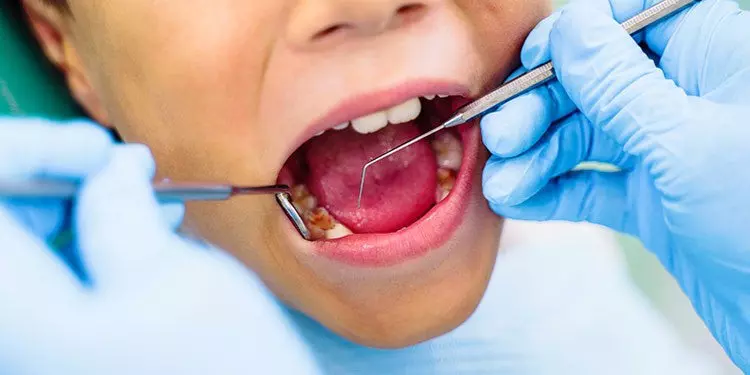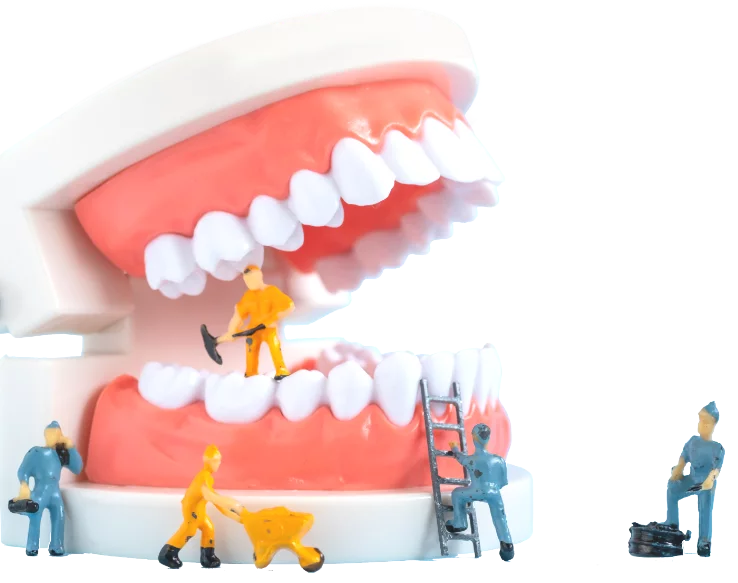What Is a Cavity?
A cavity is a permanently damaged area of a tooth that resembles a hole. Cavities result from tooth decay. They form when acids found in the mouth erode a tooth’s hard, protective surface. That surface is known as tooth enamel. Tooth decay is caused by several factors, including eating and drinking sugary foods, mouth bacteria, and poor oral hygiene habits.
Anyone can get a cavity, though children, teenagers, and older adults are more susceptible. Regardless of who gets them, cavities need to be treated. Failure to treat cavities can lead to bigger oral issues, including toothaches, infections, and even tooth loss.
Signs and Symptoms of a Cavity
The signs and symptoms of a cavity will vary based on several factors. The extent of tooth decay and the location of the cavity are the most prominent. You may have a cavity in its initial stages of development, but you may not feel or see any signs. However, if your cavity is more developed, you may notice the following symptoms:
- Toothache – pain that occurs for no apparent reason
- Pain that results from biting
- Bad breath
- Bleeding gums
- Tooth sensitivity to hot, cold, or spicy foods or drinks
- Visible tooth holes or pits
- Tooth stains – the stain can be black, brown, or white
- Swollen face
- Redness outside or inside the mouth
What Causes Cavities?
Phase One:
Phase Two:
Phase Three:
What Are the Types of Cavities?
Smooth Outer Surface
Tooth enamel can be penetrated, despite its strength. Proper oral hygiene is your best weapon to prevent smooth surface cavities. Brushing, flossing, and regular dental cleanings will preserve your enamel while preventing cavities. Folks in their twenties can be susceptible to this type of cavity.
Pits and Fissures
Root Decay
This type of decay is more prevalent in older folks due to gum recession. When gums recede, tooth roots are exposed to plaque and acid.
How to Prevent Cavities?
Brushing and Flossing
Use Mouthwash
A mouth rinse can complement regular brushing and flossing. Your dentist might recommend a rinse that contains fluoride if you are at high risk of developing cavities.
Dental Checkups
Eat for Your Teeth
Drink Tap Water
Many public water supplies contain fluoride. Fluoride helps repair tooth enamel and can potentially reverse a cavity that has started if caught early enough.
Fluoride Treatments
Besides public tap water, there are other ways to get fluoride. Discuss them with your dentist at one of your regular checkups.
Risk Factors for Cavities
Anyone who has teeth is at risk of getting cavities. But there are specific factors that can increase your risk.
- Poor oral habits – failing to brush after eating leads to plaque accumulation.
- Food choices – foods high and sugar and that will cling to your teeth can cause decay.
- Tooth type and location – molars and premolars are more likely to develop decay because of their grooves and uneven surfaces that collect food particles.
- Lack of fluoride – tooth enamel can weaken without fluoride treatments.
- Dry mouth – saliva naturally rids your teeth of food particles and plaque.
- Eating disorders – stomach acid from chronic vomiting can dissolve tooth enamel.
- Acid reflux – like an eating disorder, stomach acid forced into your mouth will wear down tooth enamel.
- Frequent snacking – snacking on sugary foods or sipping sugary drinks produces more acid to attack your teeth.
- Infant feeding at bedtime – giving an infant a liquid that contains sugar, such as juice or formula, before bed allows the liquids to rest on their teeth for hours.
How Do You Treat Cavities?
Fluoride
Fluoride Treatment is used when a cavity is caught in the early stages. Remineralization is the process of using fluoride treatments to repair tooth enamel. Fluoride treatments can sometimes reverse a cavity when it is in its infant stage. Your dentist can apply fluoride during office visits. The treatments can take various forms, including liquid, gel, foam, or a varnish brushed onto your teeth by the dentist. Fluoride can also be placed in small trays that fit over your teeth. You might also need a prescription toothpaste and mouthwash.
Fillings
A cavity tooth filling is the standard treatment once your dentist detects a hole in the tooth. That means the cavity has advanced beyond the stage of being treated with fluoride. The dentist drills out the decayed part of the tooth and repairs it with a filling. Dental fillings tend to consist of tooth-colored composite resin, porcelain, silver amalgam, or gold.
Crowns
Crowns are a treatment option for excessive decay or when the tooth has weakened. A crown is a custom-fitted covering that is placed over the tooth. Your dentist first drills away the decayed tooth portion along with some additional tooth surface so that the crown will securely fit the remaining tooth. Crowns can be made from several materials, including porcelain, resin, porcelain fused to resin, or gold.
Root Canal
A root canal becomes necessary once the cavity has advanced to root decay. Endodontists are specialists at performing root canals. A root canal procedure removes the tooth pulp that consists of the pained nerve endings and replaces it with a filling. Root canals repair and save a tooth from being removed.
Tooth Extraction
Tooth extraction becomes necessary for severe tooth decay that leads to rotten teeth. If the tooth can’t be restored, removing it is the only option. Replacing the extracted tooth with a dental implant or a dental bridge will prevent your teeth from shifting while maintaining your appearance.
Find a Dentist Near You to Treat a Cavity
Consult your dentist to discuss the best methods to treat a cavity and tips to prevent tooth decay. If you don't have a dentist and are asking where to find a dentist near you, The Smile Generation can help find a dentist near you for your cavity treatment needs. You can read patient reviews, peruse staff bios, and schedule an appointment online with a click of your mouse.
Find your trusted, local dentist today!
Sources
Smile Generation blog articles are reviewed by a licensed dental professional before publishing. However, we present this information for educational purposes only with the intent to promote readers’ understanding of oral health and oral healthcare treatment options and technology. We do not intend for our blog content to substitute for professional dental care and clinical advice, diagnosis, or treatment planning provided by a licensed dental professional. Smile Generation always recommends seeking the advice of a dentist, physician, or other licensed healthcare professional for a dental or medical condition or treatment.








